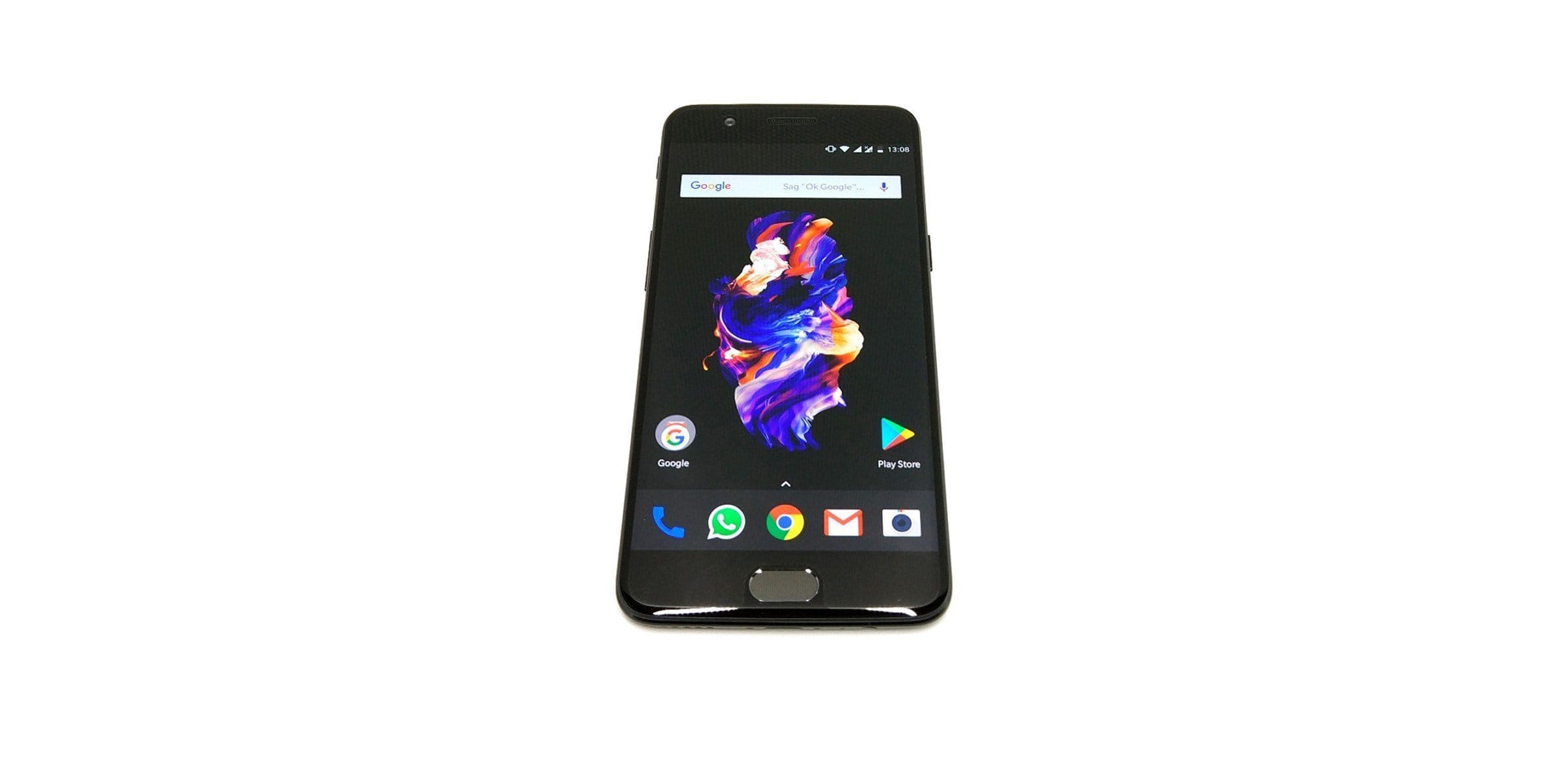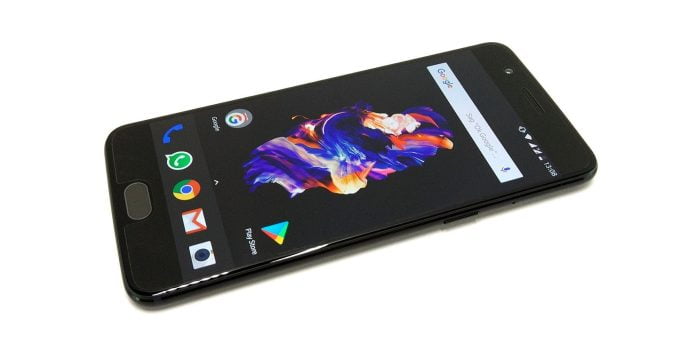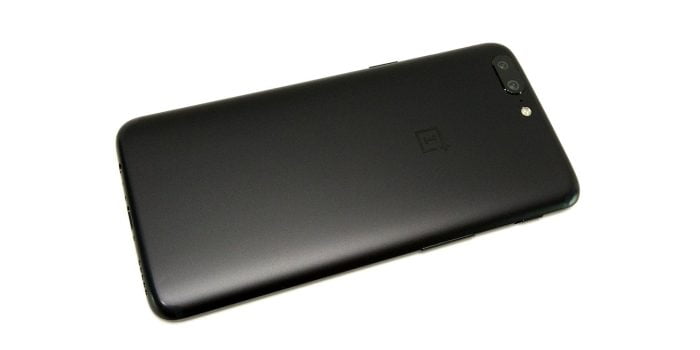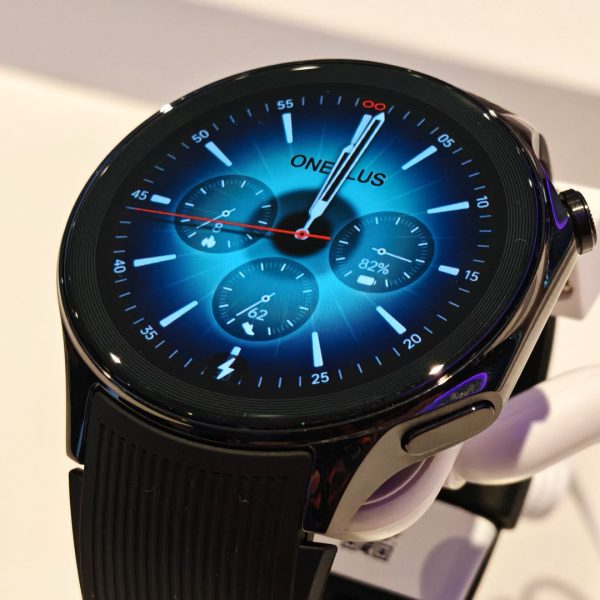OnePlus 5: Foreword
“Tetraphobia refers to the superstitious fear of the number 4, which is particularly widespread in East Asia and Southeast Asia.” - Wikipedia
That explains why OnePlus, based in China, did not choose a OnePlus 4. After all, which manufacturer would like to bring a “misfortune smartphone” onto the market? A lot has happened since the OnePlus One, which appeared in 2014 as a high-end smartphone for the small budget and was often touted as the “flagship killer”. Other manufacturers, mostly from China, also want to attract high-end hardware at a bargain price. With a retail price of around 500 €, the OnePlus 5 is different from other low-cost homes with similar features (e.g. Xiaomi Mi6) but far away. The question that you have to ask yourself now is: Is it worth buying?
Design, workmanship and delivery
The design of the OnePlus 5 is reminiscent of a mix of the previous model “OnePlus 3T” and the current “iPhone 7 Plus”. The front looks very similar to the OnePlus 3T. The back, on the other hand, is characterized by a distinctive main camera, which is arranged identically to an iPhone 7 Plus. "Slate Gray", "Midnight Black" and, more recently, "Soft Gold" are available as housing colors. In the so-called unibody, the back and the frame are not separated from each other and form a unit. This means that it is not possible to change the battery. At the same time, the smartphone is not waterproof either! The housing material is aluminum, which means that the 154.2 x 74.1 x 7.25 mm smartphone weighs just 153g. This makes the device unexpectedly light in the hand. The rounded unibody housing also gives it a pleasant feel. A small point of criticism is the somewhat slippery back, which also offers a target for fingerprints.
The structure of the smartphone hardly differs from other devices. A 5.5-inch AMOLED display takes its place on the front. Underneath there is a capacitive home button that also includes a fingerprint scanner. To the left and right of it there is an illuminated capacitive button. Above the display there is a comparatively large auricle in the middle, a proximity sensor to the left and a 16 megapixel front camera next to it. A notification LED was placed to the right of the auricle.
The volume rocker is located on the left of the housing frame. Above this there is a slider, which can be used to activate 3 different volume levels or a Do-Not-Disturb mode. The dual SIM slot, which can be equipped with two nano SIM cards, and the power button are located on the right side of the housing. Loudspeaker, microphone, USB-C socket and 3.5 mm audio socket were placed on the lower part of the frame.
The rear is formed by the dual main camera, which protrudes from the housing. The main camera is supported by a two-color LED flash. The OnePlus logo is located in the upper third of the back of the case. As it should be for a smartphone in the upper price range, the processing quality is not objectionable.
The scope of delivery includes the OnePlus 5, a "Dash Charge" quick charger, a USB-C cable, a SIM needle and a user manual. A screen protector was already on the display. OnePlus does not include a suitable protective cover. Accessories from the manufacturer, such as various protective covers, can, however, be purchased separately.
Display
The OnePlus 5 uses an “Optic AMOLED” display that has a 5.5-inch diagonal with a resolution of 1920 x 1080 pixels. The addition "Optic" is more appearance than reality and stands much more for a mere marketing addition than that it is a new technology. In contrast to a conventional AMOLED panel, the contrast and color temperature of the “Optic AMOLED” have been adjusted accordingly by OnePlus software so that the display is comparable to a “Super AMOLED”. Incidentally, the panel used (Samsung S6E3FA5) is the identical display panel that was already installed in the previous model "OnePlus 3T". The only change is the screen protector, which is now Corning Gorilla Glass 5.
Although the built-in panel is not up to date in 2017, it does very well in practice. With a point density of 401 DPI, the display is razor-sharp. Colors are displayed very vividly thanks to the AMOLED technology, which has no background lighting and each pixel lights up individually. Sometimes the colors appear so strong that they literally shine and move away from a natural coloring. Here it is a matter of taste whether you prefer the rich colors of an AMOLED over the mostly natural color rendering of an IPS panel.
- Display settings
- Multitouch test
One advantage of the AMOLED display is the excellent contrast ratio, where black is really black. Pixels that are not needed simply remain switched off. The maximum display brightness is sufficient to be able to read the display reasonably well outdoors and in sunshine. Compared to a Xiaomi Mi6 The luminance of the OnePlus 5 display still lags a bit behind. The excellent viewing angle stability was also convincing in the test. No matter how you tilt the smartphone, the display is retained. The touchscreen also makes no effort and even recognizes 10 simultaneous inputs precisely. What is striking, however, is the “jelly effect”, which makes the screen content appear compressed when scrolling. According to OnePlus, this is normal display behavior. To what extent the error can be eliminated with future firmware updates remains to be seen. Some smartphone users could, however, be bothered by the “jelly effect”.
Within the display settings, the OnePlus 5 offers different adjustment options for color reproduction. In addition, a smart wake function as well as a night and reading mode are integrated. Night mode filters blue light, which is known to disrupt sleep. In reading mode, the display is switched to black and white.
Performance
Under the hood, a Qualcomm Snapdragon 835 works in the new OnePlus flagship, as can also be found in current high-end models from other manufacturers. The processor has a total of 8 Kyro 280 processor cores, which in turn are divided into two clusters with 4 cores each. The clusters are an energy-saving cluster within which the cores clock at a maximum of 1.9 GHz, as well as a high-performance cluster whose cores in turn clock at up to 2.45 GHz. The memory equipment is also impressive. Depending on which model you choose, the smartphone is equipped with 6GB or 8GB LPDDR4X memory. The same applies to the internal memory, which is 64GB or 128GB UFS2.1 memory, depending on the model. A memory expansion using a micro SD memory card is not intended!
- Geekbench 4
- A1 SD Bench
In everyday life, the OnePlus 5 impresses with its first-class performance. The loading times when opening the apps are short and there are no drops in performance even in multitasking. The smartphone cuts a fine figure in mobile gaming. Thanks to the Adreno 540 GPU, the device can cope with all currently available mobile games, so that they can be played smoothly even on the highest settings. An unpleasant heat development does not occur even after prolonged gaming.
- AnTuTu
- 3DMark
user interface
OxygenOS, based on Android 7.1.1, is used as the operating system. Compared to user interfaces from other manufacturers, OxygenOS is extremely tidy. There is hardly any bloatware on the system. Only a few of the manufacturer's apps are preinstalled in addition to the typical Google apps.
Visually, the user interface is only slightly modified. The settings menu is designed to be clear and all functions are accessible with just a few touches. On the one hand apps can be selected via the app drawer, as well as apps can be stored directly on the start screen and additional pages. In addition to the start screen, there is also a separate page for widgets, which is accessible from the home screen with a swipe to the left.
- homescreen
- System Info
Camera
The OnePlus 5 is the first OnePlus smartphone that uses a dual main camera. The dual camera uses a 16 megapixel Sony IMX 398 image sensor with an unspecified wide angle, an f / 1.7 aperture and a Contrast Detection Auto Focus (CDAF). The second image sensor is called Sony IMX 350 and is a 20 megapixel telephoto sensor with a 1.6x optical zoom, an f / 2.6 aperture and a phase detection on focus (PDAF).
The front camera uses a 16 megapixel Sony IMX 371 image sensor with f / 2.0 aperture and a fixed focus.
main camera
Although OnePlus mainly emphasized the main camera when announcing the smartphone, in practice it is less convincing. Especially compared to other flagship models in a similar price range, the recording quality of the main camera lags behind.
The shutter release time and the auto focus are not objectionable in both good and bad lighting conditions. However, there are criticisms of the recording quality in general. Some of the pictures that have been taken have a clear blurring and when you zoom in it becomes clear that the main camera is weak, especially when it comes to the details, and objects further away appear muddy. With increasingly poor lighting conditions, there is also significant image noise. The color rendering is also to be criticized. Colors are sometimes displayed too saturated and thus deviate from a natural color scheme. The lossless optical zoom with a factor of 1.6 is extrapolated to 2.0 on the software side.
Videos are recorded by the main camera with maximum 4K resolution, at 30 frames per second. With a resolution of 1080p, even 60 frames per second are possible. OnePlus does not use optical image stabilization for image stabilization, but electronic image stabilization that is automatically active at every selectable resolution. To the disadvantage of all users of a gimbal, the image stabilization function cannot be deactivated afterwards! The video recording quality is convincing and the EIS also delivers surprisingly good results. The focus and exposure can be controlled manually while a recording is in progress. The sound recording quality is also nothing to complain about and meets the expectations.
Front camera
The front camera is suitable for selfies. But even here, colors are sometimes too saturated. The sharpness and the degree of detail are again neat in good lighting conditions. With poorer lighting details are increasingly lost. Since the front camera does not have an LED flash, OnePlus uses the display as a flash, which lights up for a brief moment. Videos are recorded in 1080p at 30 frames per second.
- Good lighting conditions
- Bad lighting conditions
Camera app
In addition to the conventional picture and video recording mode, the camera app also offers a Pro mode that allows manual settings for ISO, white balance, exposure time, focus and light value. With this mode it is also possible to save images in the raw data format RAW. The Pro mode is easy to use for beginners.
Another photo mode is the panorama mode, whose algorithm conjures up almost seamless image transitions. Other video modes are the time-lapse mode, which saves recordings with a maximum resolution of 1080p, and the slow-motion mode, whose maximum resolution is 720p with 120 frames per second.
The special "bokeh effect", a depth effect in which objects in the foreground are displayed particularly sharp and objects in the background are out of focus, must be selected separately. Compared to other smartphone models with a similar function, the OnePlus 5 offers no added value. The bokeh mode works, but on closer inspection it also has some calculation errors, which means that fine transitions and edges are not always accurately implemented with the depth effect.
Audio
The mono speaker of the OnePlus 5 delivers a balanced sound. The loudspeaker is extremely loud at maximum volume, but still does not lose sound quality. An unpleasant scratching or roaring does not occur even with high-pitched songs. For those who prefer to listen to music through headphones, the smartphone still has a 3.5 mm audio connection despite the USB-C standard. The sound quality via the audio connection impresses with a very clear sound. In the Bluetooth network, the audio codecs “aptX HD”, “aptX” and “SBC” can be selected within the settings.
connectivity
Mobile
The OnePlus 5 has only appeared in a "global version" and is every globetrotter's dream. Not only the frequencies customary in this country are supported, but also frequencies from the Asian and American regions. For example, if you buy a smartphone in China, you get the same model that is sold here in Germany.
As a dual SIM smartphone, two nano SIM cards can be inserted into the SIM slot at the same time. The reception quality in the cellular network is at the flagship level. The connection was not impaired at any time when making calls or surfing the web. Both through the auricle and through the loudspeaker you can clearly understand your conversation partner. Noise is filtered very well by the microphone.
WiFi and Bluetooth
WiFi is supported with the Wi-Fi 802.11 a / b / g / n / ac protocols. Thus, the smartphone can be used in the 2.4 GHz as well as 5 GHz network. Here, too, the reception quality is convincing thanks to a constant and strong signal with a good data throughput rate. Bluetooth is supported with version 5.0. Disadvantages were not noticeable in the course of the test.
GPS and sensors
The GPS module finds a GPS fix both outdoors and indoors within a few seconds. The position determination is accurate to within a few meters. The smartphone provides a stable connection when navigating. Jumps during positioning did not occur during the navigation test. The smartphone is also suitable for pedestrian navigation thanks to the additional e-compass. Other satellite navigation systems that are supported are GLONASS, Beidou and Galileo.
- GPS outdoor
- GPS Indoor
The sensory equipment amounts to a well-functioning and fast fingerprint sensor, a Hall sensor, an accelerometer, a gyroscope, a proximity sensor, an RGB ambient light sensor and a sensor hub.
Battery
The capacity of the battery is 3.300 mAh. This puts the OnePlus 5 in the good midfield of comparable devices. In everyday life, one battery charge is enough to get through the day with normal use. With moderate use, even 2 days are possible with one battery charge. Under load, however, the battery already kneels after an average of 4 ½ hours. The "Dash Charge" quick charge function has proven to be extremely efficient. The quick charge function takes just 0 minutes from 50 to 25%. The battery is 50% charged after 90 minutes. The remaining 10% take the longest, around 25 minutes. In the end, the battery is fully charged after just 75 minutes.

OnePlus 5
Design and workmanship
AMOLED display
Efficient Snapdragon 835
Lush storage facilities
Clean Android
Comprehensive mobile phone support
Extensive navigation satellite support
Very fast battery charging time
No memory expansion
No stereo speaker
Jelly effect of the display
Recording quality of the main camera
Mediocre battery life
That the OnePlus 5 continues to be a flagship smartphone is beyond question. A flagship killer, like the manufacturer's first smartphone, is no longer the OnePlus 5. Rather, the smartphone joins next to high-end smartphones known manufacturers, such as Samsung or HTC.
All in all, the OnePlus 5 impresses with a convincing display, even if this is the display of its predecessor, a high-performance processor that provides enough power in everyday life, as well as its extensive mobile phone support. Less could convince the hyped to announce the main camera, which lags slightly behind the high-end models of other manufacturers in terms of recording quality. The battery performance is also rather mediocre, thanks to Dash Charge the battery is fully charged within a very short time again. Who does not shy away from the price of the OnePlus 5, which has clearly raised its price compared to its predecessors, will receive a thoroughly solid package.




























